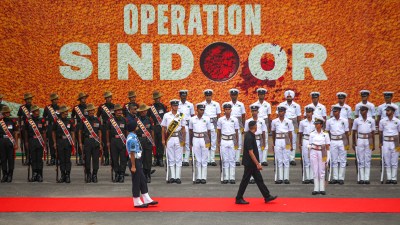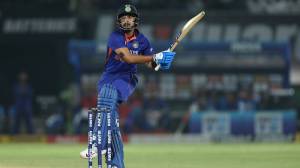Click here to join Express Pune WhatsApp channel and get a curated list of our stories
Ambulances along E-way get daily calls, focus on “Platinum Ten minutes”
According to data from Maharashtra Emergency Services, last year around 485 patients with trauma injuries were served along Mumbai-Pune expressway.
 Dr Varsha Wadhokar,Secretary, Pawana Medical Foundation when contacted told The Indian Express that there were three designated centres where the ambulances are stationed. (Representational File)
Dr Varsha Wadhokar,Secretary, Pawana Medical Foundation when contacted told The Indian Express that there were three designated centres where the ambulances are stationed. (Representational File)Ambulances along the Yashwantrao Chavan Pune -Mumbai expressway get calls daily, which may not necessarily be a critical injury. “The patient may have suffered chest pain or vomiting. However the first job of the paramedic is to reach the site on time, retrieve the patient and address the need- if it is very critical, then the need of the hour is to reach the tertiary care centre as fast as possible and Code Blue is sounded so that the medical teams are ready at the hospital,” said Dr Ajay Kale, medical coordinator for the Trauma Care Centre run by the 200-bed Pawana hospital, off the Mumbai-Pune expressway.
“It is easier to reach the Pawana hospital- 800-900 mts from the expressway- (from the Pune end) than the trauma care centre which is located at Ozarde,” Dr Kale said. It is a referral centre and does not have X-ray and other diagnostic facilities- Hence the patients are sent to the tertiary centre. In case the accident takes place (from the Mumbai -end Khandala to Mukai chowk then one has to take a U-turn at Urse and then reach the trauma care centre which is at a distance.
Hence patients are referred to Pawana Hospital which includes a 50-bed Intensive Care Unit, has a Cath lab, CT-Scan,MRI, cardiothoracic centre and has been identified by Maharashtra State Road Development Corporation (MSRDC) to treat patients involved in E-way accidents along the approximately 40 km stretch from Khandala to Kivale.
Explaining the process of how emergencies are treated along the expressway, Dr Kale pointed out that upon receiving a call at 98224 98224, the control centre of Ideal Road Builders at Lonavala, alerts the ambulances. “I ensure that the ambulance reaches the site within 8-10 minutes and treatment is immediately started,” Dr Kale told The Indian Express. “Our ambulances are well-equipped and minor dressings are done in the ambulance itself. After the assessment if it is a critical injury then the patient is sent to the hospital,” he added. He also observed that only minor cases were attended to in this last quarter. “I have not seen patients brought dead in the last quarter from Kivale to Khandala,” he added.
Dr Varsha Wadhokar,Secretary, Pawana Medical Foundation when contacted told The Indian Express that there were three designated centres where the ambulances are stationed. Meanwhile, there are two more at Pawana Hospital. Hospital authorities also said that at times patients injured in the accident also prefer to go back to hospitals in Pune and Mumbai (if they are already at that end).
Lokmanya group of hospitals has been actively involved in the Golden Hour project along the E-way – under the guidance of Chairman Dr Narendra Vaidya – which has saved more than 45,000 lives in the last two decades.
According to Dr Shrikrishna Joshi, Chief Operating Officer at the Lokmanya group of hospitals, five ambulances are stationed on the expressway — at Lonavala and Khalapur. “The number of accidents have come down and patients are treated at Lokmanya Hospital at Nigdi. The ambulance located at Khalapur attends to the patients towards Mumbai and takes them to the Mahatma Gandhi Mission and Medical Hospital, Kamothe,” he said.
It may be recalled that the Expressway was once infamous for recording 151 deaths in 2016, roughly 3 deaths every 2 km compared to the 2016 national average of 1 death per 2 km according to Save Life Foundation
“Currently there is a concept of Platinum Ten minutes to reduce road deaths by improving ambulance response times,” he added. Over the years, the expressway’s ambulance fleet has expanded from 2 to 8. According to data, the Expressway saw a 58.3% decline in road crash fatalities since 2016 and 32% since 2022 after the launch of the Zero Fatality Corridor—a joint effort of the Maharashtra State Road Development Corporation, the Maharashtra Highway Police, the Maharashtra Motor Vehicle Department, and SaveLIFE Foundation.
Meanwhile, according to data from Maharashtra Emergency Services, last year around 485 patients with trauma injuries were served along Mumbai-Pune expressway.
INCREASING TRAFFIC, HUMAN ERROR SIGNIFICANT CONTRIBUTOR TO ACCIDENTS
“The increasing traffic along the Mumbai-Pune Expressway and human error are significant contributors to accidents,” said Manuj Jindal, Joint Managing Director of MSRDC, in an interview with The Indian Express. According to data from MSRDC, last year as many as 1220 accidents were attended to and there were 375 safe evacuations including 287 minor and 88 major injuries.
Jindal highlighted that the average ambulance response time to reach an accident site and begin treatment is between 8-10 minutes. “We have identified hospitals and even set up a medical facility at Khalapur,” he added. However, he noted that unsafe driving practices, such as driving in the wrong lanes, also play a role in accidents.
“To promote safer practices, we have implemented the Intelligent Traffic Management System along the expressway and conducted multiple meetings with the Save Life Foundation,” Jindal.
Click here to join Express Pune WhatsApp channel and get a curated list of our stories








